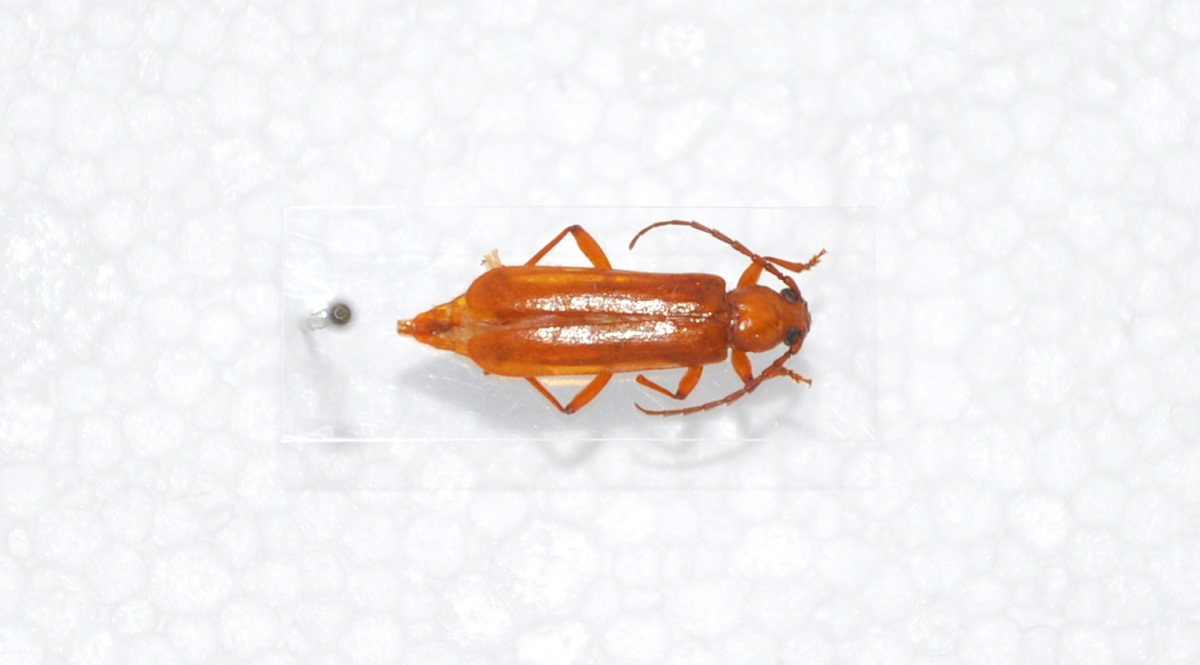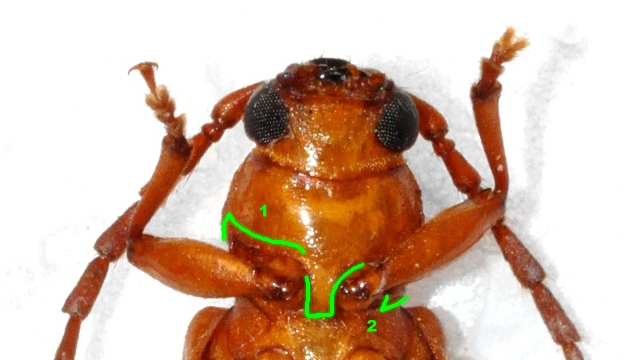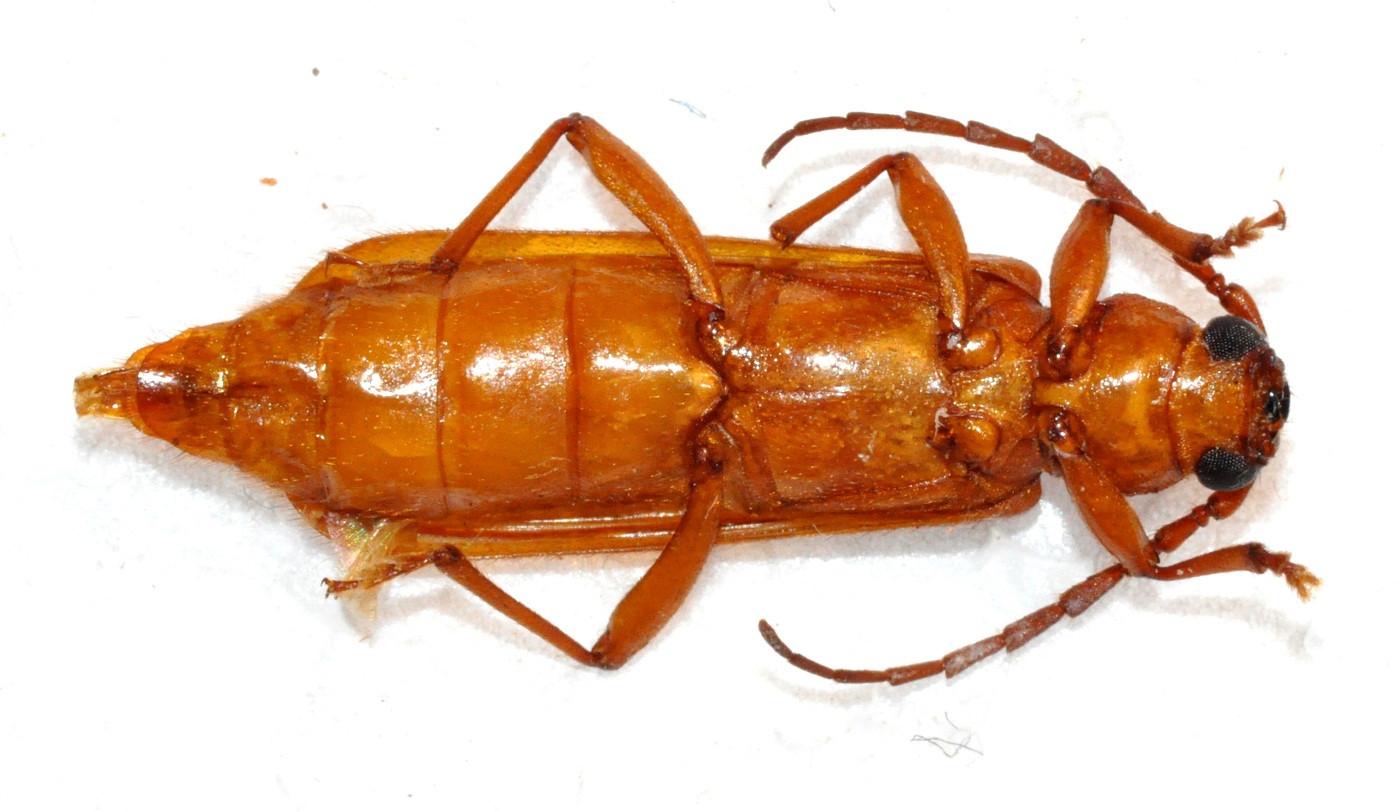| T O P I C R E V I E W |
| Pierre |
Posted - 09/01/2011 : 21:01:46

Dear Francesco,
Here I come back on your forum with a few new posts for the new year.
First: a small 15mm Cerambycid female from Cameroon, it remembers some Callidiini (??).
Perhaps you have some inspiration. |
| 12 L A T E S T R E P L I E S (Newest First) |
| Jérôme Sudre |
Posted - 22/06/2015 : 16:12:20
Francesco a raison la bête m'a aussi donné l'impression d'être petite, et la surexposition lumineuse m'a aussi induit en erreur à moins qu'elle soit immature ? |
| Pierre |
Posted - 22/06/2015 : 13:51:53
Merci à tous.
C'est vraiment plaisant de voir tout ce que ce genre de "travail commun" arrive à sortir... |
| Francesco |
Posted - 22/06/2015 : 10:40:54
Oui, ça semble la chose plus probable, je ne sais pas pourquoi je ne l'ai pas reconnu tout de suite.
Il m'avait donné l'impression d'un insecte très petit, mais maintenant je lis qu'il atteint 15 mm  |
| Jérôme Sudre |
Posted - 19/06/2015 : 11:40:30
En effet cette bestiole rappelle beaucoup Holorusius perrieri Fairmaire = Zamium laevicolle et il s'agit probablement d'elle ? |
| Francesco |
Posted - 13/04/2015 : 20:54:29
En effet, ils n'existent pas de Xystrocerini avec cet aspect.
Je regarderai au côté de Smodicini.
Le genre plus proche semble être Smodicum... nouveau?
Pourtant, il faut dire que Holorusius (qui manque dans le révision) lui ressemble beaucoup... |
| Francesco |
Posted - 27/02/2015 : 18:35:37
Another idea is that this species is a member of Smodicini.
In the library, we have the revision by Martins... actually, the differences between these primitive tribe are fairly confuse. |
| Pierre-Olivier Maquart |
Posted - 27/02/2015 : 10:00:55
Little up  |
| Francesco |
Posted - 06/02/2011 : 12:18:45
Xystrocera and Xystroceroides are the only genera of Xystrocerini having such character.
Past authors did not consider it as sufficient to identify a tribe since e.g. Callichromatini, Compsocerini, Batocerini have species or even genera with more or less developed or even absent apical spine.
Actually, Xystrocerini have genera with apical cicatrix like Lamiini (e.g. Oxycauloeme, Parauxesis, Diptychoeme) or not, dentate antennae (e.g. Paroeme, Antennoeme) or not, shorted elytra (Methia and similar) or not, divided eyes (Tetraomatus, Diptychoeme) or not, divided stridulatory area (Oplatocera) or not, finely faceted eyes or not, etc. but all are characterised by corneous ligula and acute open procoxal cavities.
More recently, Martins proposed to divide Xystrocerini, Methiini and Oemini.
Xystrocerini for the antennal spine, Methiini for the shortened elytra, Oemini the rest.
He also added larval characters, but only concerning Xystrocera, Methia and Oeme... moreover, evidencing characters (number of ommatides) banally variable in some other tribes, such as Clytini.
However, he ascribed a lot of genera with shortened elytra to Oemini (Kalore, Necydalosaurus, Methioides, Methioeme) and with normal ones to Methiini (Methicula)...
|
| Pierre |
Posted - 06/02/2011 : 11:22:24
I am really curious about your following observations and comments. I would never have thought that this species belongs to the Xystrocerini tribe. What's about the scape? Do not Xystrocerini have spines onthe first antennomere? - Concerning the eyes, yes, the facets are fine and flattened. |
| Francesco |
Posted - 06/02/2011 : 10:58:35

The long acute (1), posteriorly open (2) procoxal cavities and the large intercoxal process indicate a primitive representative of Cerambycinae.
Other characters (ligula corneous or membranous, which differentiate Hesperophanini from Xystrocerini) are not visible; however, no Hesperophanini has dentate antennae.
Eyes look finely faceted (this implies Callidiini), but I noticed that some Xystrocerini have this character as well.
I am compilation a key to African Xystrocerini... I hope to identify your specimen (a female). |
| Pierre |
Posted - 04/02/2011 : 21:23:54

Xystrocerini?? That would be a real surprise... here the ventral view. |
| Francesco |
Posted - 04/02/2011 : 19:03:30
By considering its distribution, it should be a representative of the tribe Xystrocerini, such as Leptoeme. Not easy to identify without a closer examination.
Could you please add a picture of the ventral side? |


